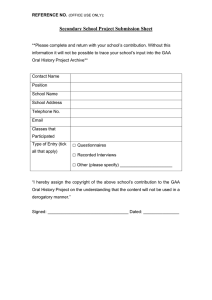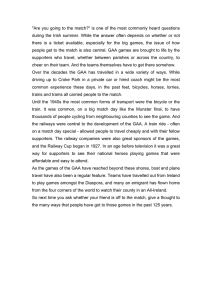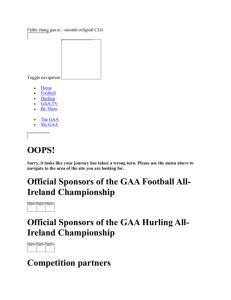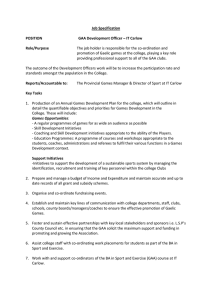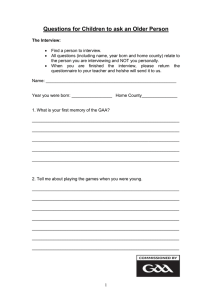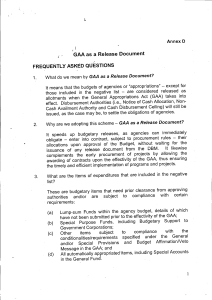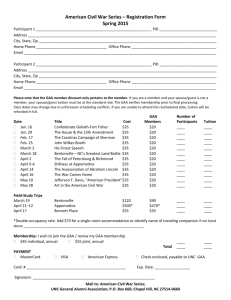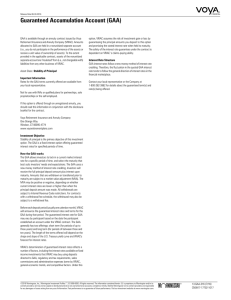Incidence of Injury
advertisement
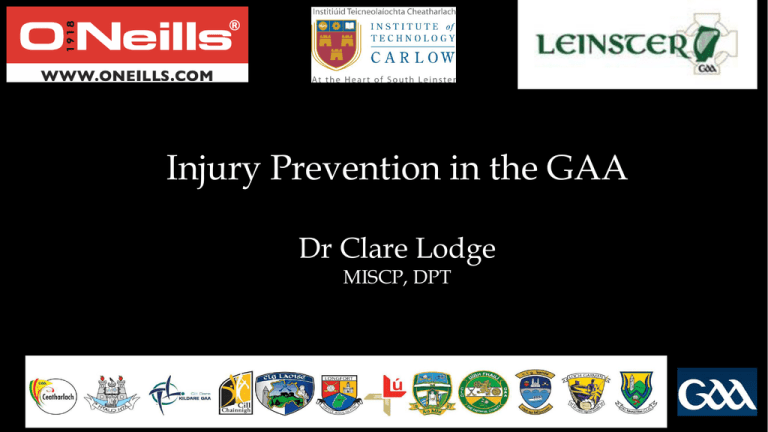
Injury Prevention in the GAA Dr Clare Lodge MISCP, DPT Psychological – Self / Family/ Team Financial – personally/ club/ county board Health – long term “Ouch!” – 13 of the worst injuries suffered by GAA players in 2013 http://thescore.thejournal.ie/c olm-oneill-cruciate-injury-20141215104-Dec2013/ Incidence of Injury •Over the 4 seasons estimated that there will be 1.19 injuries per player. (1) •Injuries 15 x more common during matches than training 29% Injured Injury free 69% Type of Injury 18% 50% 32% Contact Noncontact unspecified Non contact incorporated the following mechanisms: Sprinting Turning Landing Kicking 35.00% Distribution of injury 30.00% 25.00% 20.00% 15.00% 72 % of all injuries occur to the lower limb 33.30% 28.20% 10.00% 5.00% 0.00% 9.40% 11.30% 10% 5% 2.80% • Muscle injury Bone 19.7 • Ligament Injury ligament 25.3 M/s tendon 52.80% • Tendon Injury 32.4 “At Risk” Mental Health Players Strength Training load Conditioning Player Flexibility Well being Nutrition Hydration Prevent Injury Enhance Performance Avoid vulnerable positions Increase flexibility Increase Strength Include Plyometrics Include Proprioception +Agilities www.learning.gaa.ie/node/268653 ~You may need to work on specific areas of the Program www.learning.gaa.ie/node/268683 Other studies (3),(4) implemented various programmes incorporating a combination of the PEP program concepts and results are promising. 74%- 89% decrease in lower limb injury incidence Noncontact injuries decreased by 1/3. Re-occurence of lower limb injury was 5x more likely in the control groups. 6-8 weeks required for the Program to have neuromuscular effect Emphasis on technique: - landing softly on the forefoot engaging hip and knee flexion + avoid knee collapsing inward - Deceleration techniques Consider + incorporate PEP components into training Avoid poor techniques + vulnerable positions Increase Flexibility Increase Strength Include Plyometrics Include Agilities and Proprioception Identify “at risk” players - Previous Incidence of Injury is the best predictor of reinjury! • Educate • Increase awareness • Demonstrate and reassess • Individualise when necessary • Modify for age Murphy J, O’Malley E, Gissane C, Blake C (2012) American Journal of Sports Medicine , vol. 40, No.9 (2) Silvers H, Mandelbaum B (2011) SportOrtho Trauma 27, 18-26 (3) Alentorn-Geli E, Myer G, Silvers H, Samitier G (2009) Prevention of non contact ACL injuries in Athletes : A review of prevention programs aimed at modifying risk factors and reducing injury rates. Knee surgery and sports traumatology 17:859-879 (4) Griffin E, Letha Y (2003) Clinical Orthopaedics and Related Research vol. 409; 53-60 www.learning.gaa.ie/node/268653 http://thescore.thejournal.ie/colm-oneill-cruciate-injury-2014-1215104-Dec2013/ (1)
